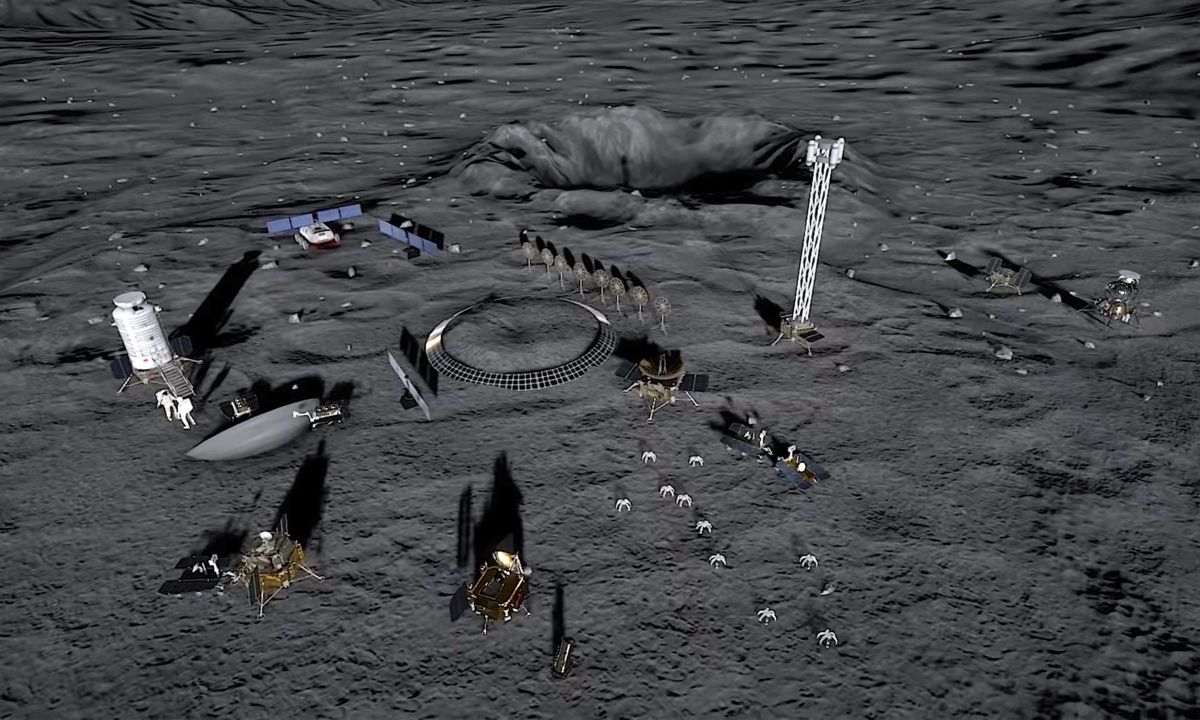On today’s This Week in Space, we talk about flying on Titan, that shrouded moon of Saturn! On this episode of This Week in Space (opens in new tab), Rod Pyle and Tariq Malik dive deep into NASA’s planned Dragonfly mission with Mission Architect Ralph Lorenz. The mission will send a nuclear-powered helicopter to explore the dunes and surface of Titan, the second largest moon in our solar system and the only one with a super-thick atmosphere. To date, only one small probe has landed on Titan and only worked for…
Read MoreMonth: September 2022
Space Station Science Highlights: Week of September 12, 2022
Crew members aboard the International Space Station conducted scientific investigations during the week of Sept. 12 that included examining adaptation of hand movements in space, studying properties of foams and emulsions, and analyzing how fuel temperature affects flammability.
Read MoreNASA Pursues Astronaut Lunar Landers for Future Artemis Moon Missions
NASA is seeking proposals for sustainable lunar lander development and demonstration as the agency works toward a regular cadence of Moon landings.
Read MoreNASA to Televise Artemis I Demonstration Test, Host Media Call
NASA will provide live coverage with commentary of the upcoming Artemis I cryogenic demonstration test beginning at 7:15 a.m. EDT on Wednesday, Sept. 21.
Read MoreNASA Sets TV Coverage for Crewed Soyuz Mission to Space Station
NASA will provide live coverage of key events as a NASA astronaut and two cosmonauts launch and dock to the International Space Station on Wednesday, Sept. 21.
Read MoreChina tests new engine for huge Long March 9 moon rocket
Chinese engineers have conducted a successful hot fire test of a new, powerful engine for the nation’s planned super heavy-lift rocket for moon missions. The closed-cycle rocket engine uses liquid hydrogen and liquid oxygen for propellant and can generate 25 tons of thrust, making it one of the most powerful such engines ever made, according to the engine’s developer. The engine was developed (opens in new tab) by an institute specializing in liquid propulsion under the ownership of the China Aerospace Science and Technology Corporation (CASC), China’s state-owned main space…
Read MoreAnycubic Kobra Max review: we like big prints and we cannot lie
Key specs Printing technology: FDM Build volume: 17.7 x 15.7 x 15.7 inches / 450 x 400 x 400 mm Print resolution: 0.05 mm – 0.3 mm Positioning accuracy: X/Y 0.0125 mm; Z 0.002 mm Extruder number: Single; Nozzle diameter: 0.4 mm (can support 0.6 mm) Print speed: 20 – 100 mm/s (recommended 80 mm/s) Operational nozzle temperature: 500 °F / 260 °C Operational hot bed temperature: 194 °F / 90 °C Connection mode: SD Card; USB cable Machine size: 28.3 x 28.1 x 26.2 inches / 720 x 715…
Read MoreWatch SpaceX launch 54 Starlink satellites from Florida tonight (Sept. 16) after delays
SpaceX plans to launch another big batch of its Starlink satellites to orbit Friday night (Sept. 16), and you can watch the action live. SpaceX plans to loft 54 more Starlink broadband satellites from Cape Canaveral Space Force Station in Florida Friday at 9:05 p.m. EDT (0105 GMT on Sept. 17). You can watch here at Space.com, or directly via SpaceX (opens in new tab). The flight plan calls for a Falcon 9 rocket to carry the Starlink Group 4-34 satellites into space, and for the first stage of the…
Read MoreMichael E. López-Alegría Poses During Spacewalk
Astronaut Michael E. López-Alegría, mission specialist, is photographed in this close-up view during one of the STS-92 sessions of extravehicular activity on Oct. 18, 2000.
Read MoreNASA’s Perseverance Rover Investigates Geologically Rich Mars Terrain
NASA’s Perseverance rover is well into its second science campaign, collecting rock-core samples from features within an area long considered by scientists to be a top prospect for finding signs of ancient microbial life on Mars.
Read More